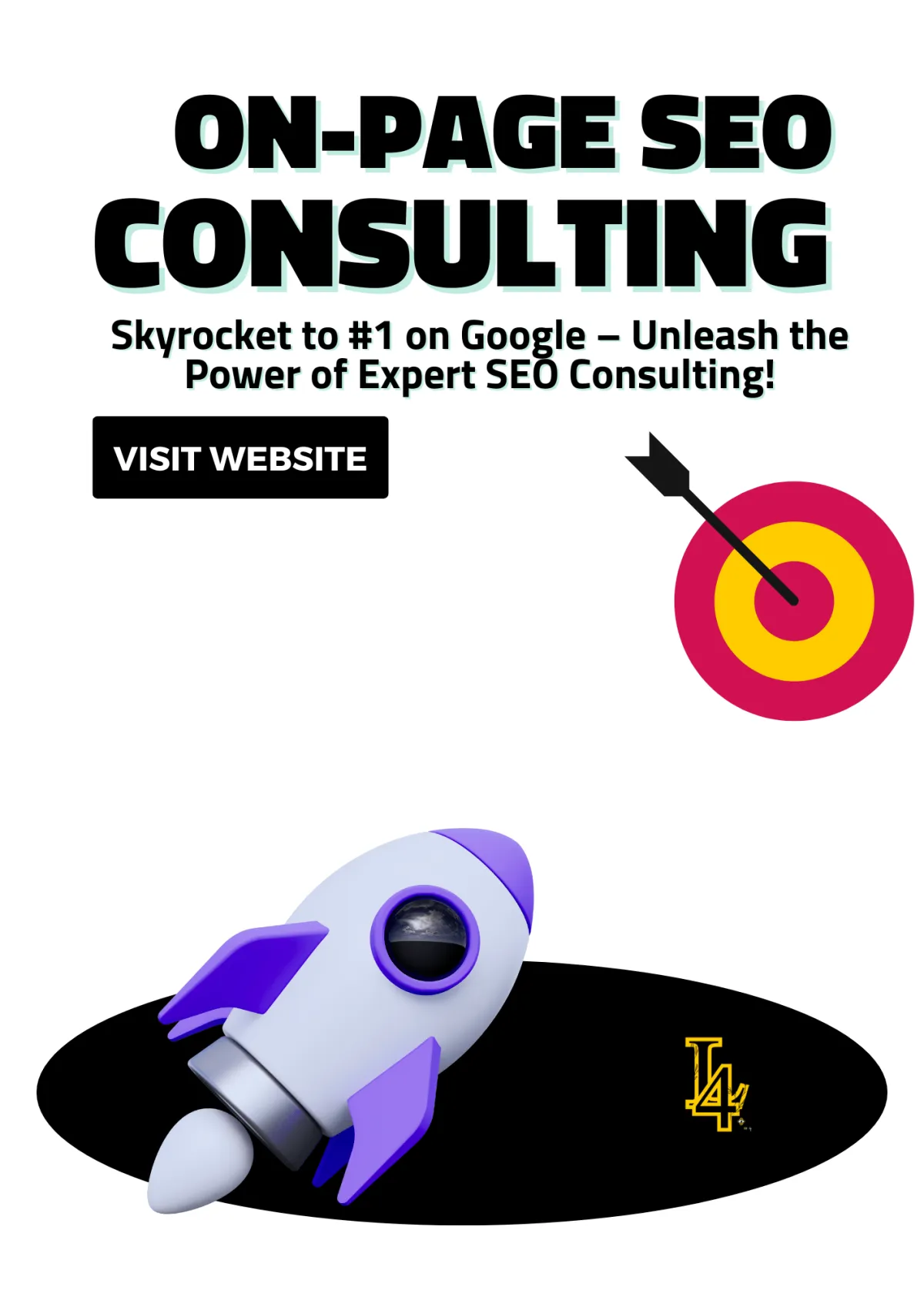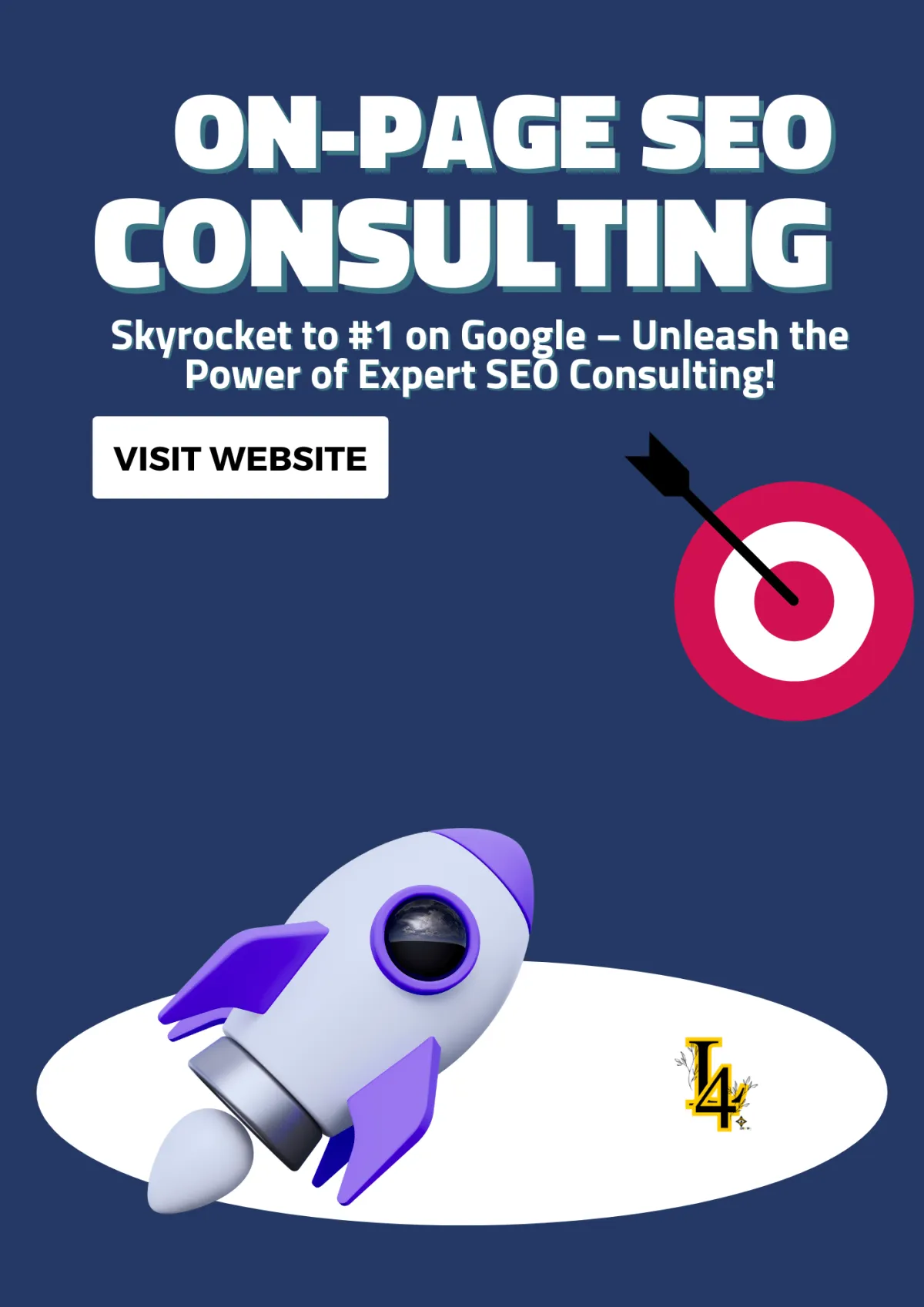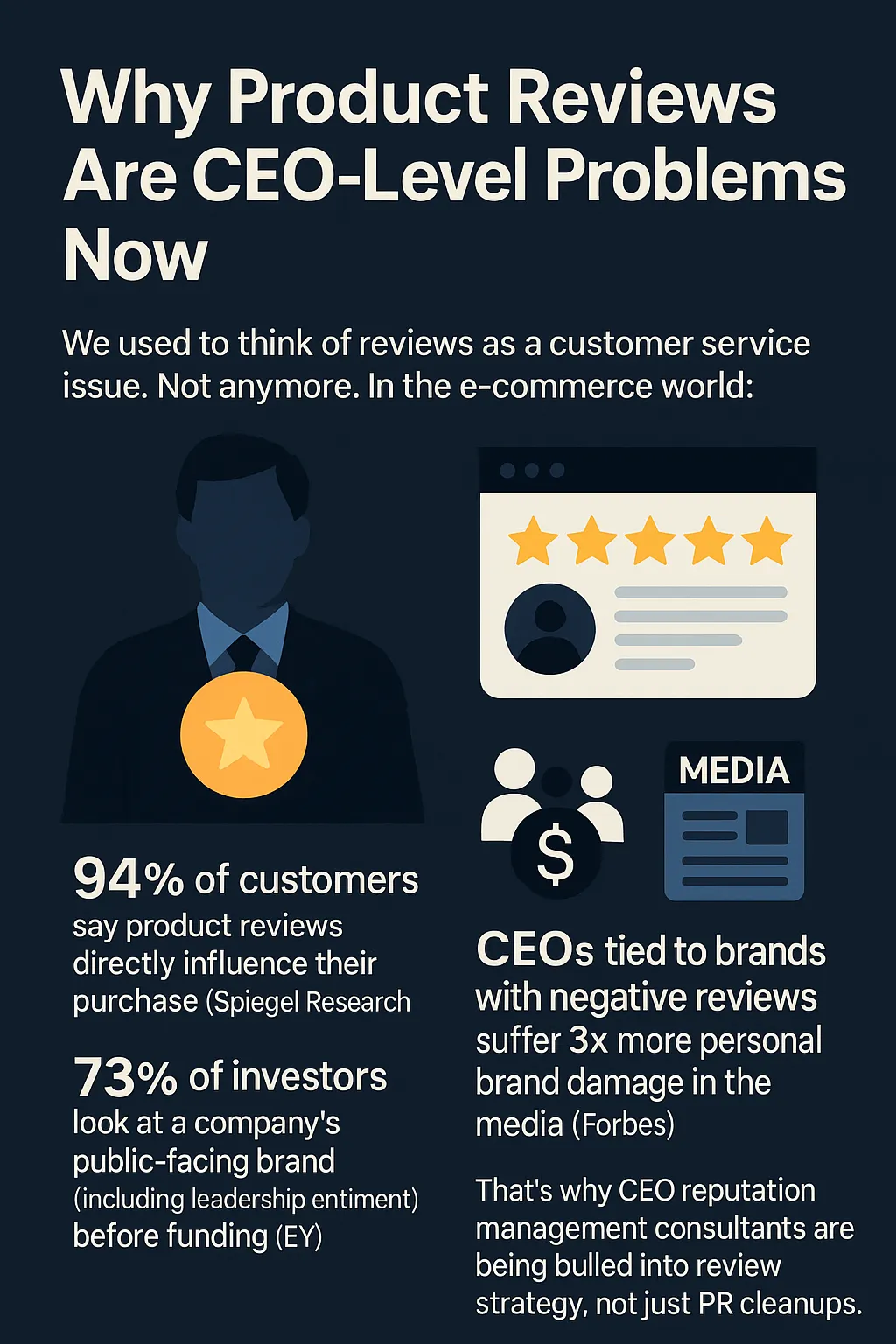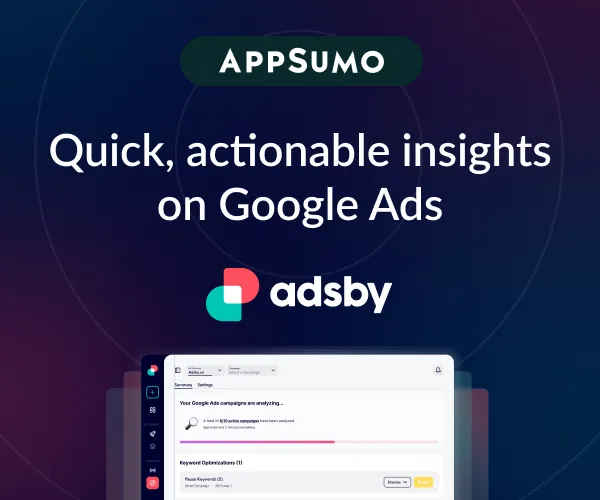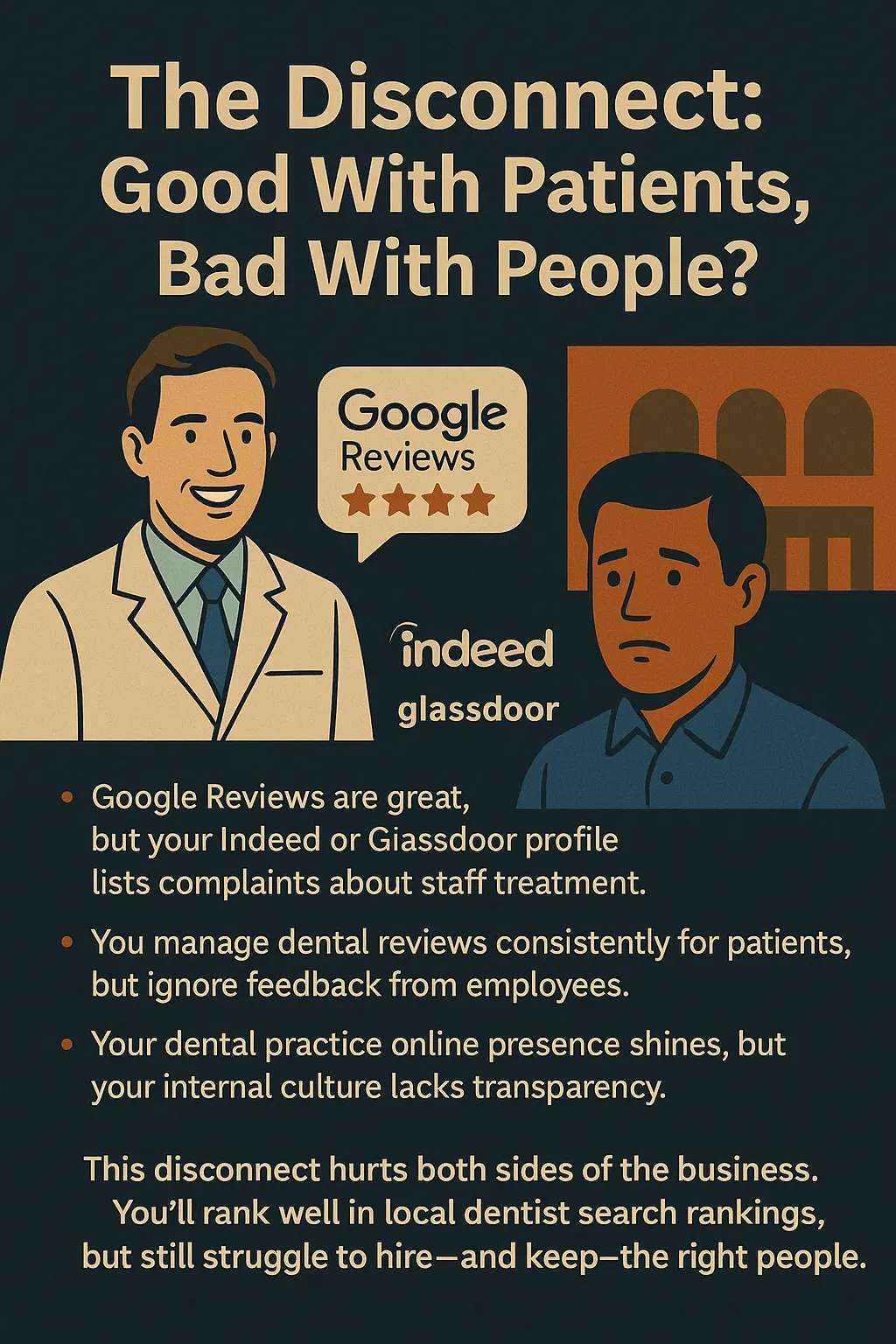
Optimize, Engage, Succeed: The Power of a Free Site Review
🎯 Is Your Website Living Up to Its Potential?
Think of your website as a car. Even the most beautiful ride can’t perform its best without regular tune-ups. That’s where a free site review comes in. It’s your ultimate performance check to uncover hidden issues, boost SEO, and drive more traffic.
Table Of Content
Boost Your Online Presence with a Free Site Review
Why You Need a Free Site Review
What’s Included in Our Free Site Review?
Success Stories: How a Free Site Review Transformed Businesses
Case Study 1: Small Business SEO Makeover
Case Study 2: E-Commerce Optimization
How to Get Your Free Site Review
Why Choose Us for Your Free Site Review?
100% Free and No Strings Attached
Ready to Unlock Your Website’s Full Potential?
Step 1: Understand the Recommendations
Step 2: Prioritize the Most Impactful Changes
Step 3: Implement Changes Gradually
Why Free Site Reviews Are Essential for Startups
Insight #1: Build a Strong Foundation
Insight #2: Focus on Cost-Effective SEO
Insight #3: Level the Playing Field
How Free Site Reviews Help E-Commerce Websites
Finding #1: Optimizing Checkout Flows
Finding #2: Fixing Product Page Errors
Finding #3: Leveraging Internal Links
Using Google Search Console for a Free Crawlability Test
Step 1: Set Up Your Site in Google Search Console
Why Google Search Console Stands Out
Common Mistakes Found During Free Site Reviews (and How to Fix Them)
2. Missing or Poor Meta Descriptions
7. Incomplete or Inconsistent Branding
8. Missing Calls-to-Action (CTAs)
9. Poor Navigation and Usability
Tools to Complement a Free Site Review: Boost Your Website’s Performance
Checklist: Preparing for Your Free Site Review
Common Priorities to Consider:
7. Confirm Hosting and Domain Details
9. Prepare for Feedback Implementation
10. Submit the Right Contact Information

Boost Your Online Presence with a Free Site Review
When I first launched my website, I thought everything looked perfect. Sleek design? Check. Content? Check. But visitors? Not so much. It wasn’t until I got a free site review that I realized my digital storefront had a few cracks in its foundation. From slow page speeds to missed SEO opportunities, I learned that even a good website needs a little help to be great. Let me share how a free site review can uncover hidden gems and set your site up for success.
What is a Free Site Review?
A free site review is a professional assessment of your website conducted by experts. It focuses on identifying strengths, weaknesses, and opportunities for improvement. This service typically examines crucial areas such as:
SEO performance: Is your site optimized for search engines?
Page speed: How quickly does your website load?
User experience (UX): Is your site easy to navigate?
Mobile-friendliness: Does your website work well on smartphones and tablets?
Content quality: Is your content engaging and relevant?
Why You Need a Free Site Review
Uncover Hidden Issues: Your site might look great, but there could be underlying problems affecting its performance. Broken links, poor SEO, and slow page speeds can drive potential customers away without you even realizing it.
Improve User Experience A well-optimized site keeps visitors engaged and encourages them to take action. A site review highlights ways to streamline navigation, enhance visuals, and improve overall usability.
Stay Competitive: Your competitors are optimizing their websites—are you? A site review ensures you stay ahead in a crowded online market by keeping your site aligned with the latest trends and technologies.
Boost Search Rankings SEO is the key to visibility. A free site review pinpoints the gaps in your strategy, helping you rank higher on Google and attract organic traffic.
What’s Included in Our Free Site Review?
Our comprehensive site review covers the following areas to give you a clear roadmap for improvement:
1. SEO Analysis
We’ll evaluate your site’s search engine performance, including keyword usage, meta tags, and backlinks. Our goal is to identify areas where you can improve your ranking and visibility.
2. Performance Metrics
We test your website’s loading speed, server response time, and overall performance. Faster sites don’t just rank higher—they also keep visitors engaged.
3. User Experience Evaluation
We assess your site’s design, layout, and functionality, ensuring it provides a seamless experience for users. This includes testing navigation, calls-to-action (CTAs), and overall accessibility.
4. Mobile Optimization Check
With most web traffic coming from mobile devices, a responsive design is essential. We’ll ensure your site looks great and functions smoothly on all screen sizes.
5. Content Review
We analyze your content for relevance, clarity, and engagement. Well-written, informative content builds trust and encourages users to stay longer.
Success Stories: How a Free Site Review Transformed Businesses
Case Study 1: Small Business SEO Makeover
A local bakery came to us with a beautiful website but low traffic. Our free site review revealed poor SEO practices and missing keywords. After implementing our recommendations, their organic traffic increased by 60% in three months.
Case Study 2: E-Commerce Optimization
An online clothing store struggled with high bounce rates. Our review highlighted slow-loading product pages and confusing navigation. By optimizing page speed and improving the user flow, their conversion rate doubled.
How to Get Your Free Site Review
Getting started is simple! Here’s what you need to do:
Sign Up: Fill out our quick form with your website URL and contact information.
Sit Back and Relax: Our team will conduct a thorough analysis of your site.
Receive Your Report: Within a few days, you’ll get a detailed report with actionable insights to enhance your website’s performance.
Why Choose Us for Your Free Site Review?
Expertise You Can Trust
Our team of web development and digital marketing experts has years of experience helping businesses thrive online.
Customized Recommendations
We don’t believe in cookie-cutter solutions. Every review is tailored to your unique needs and goals.
100% Free and No Strings Attached
There’s no obligation, no pressure, and no hidden fees—just honest, actionable feedback to help your business grow.
Ready to Unlock Your Website’s Full Potential?
Don’t let an underperforming website hold you back. With our free site review, you’ll gain the insights you need to attract more visitors, improve user experience, and drive conversions. It’s time to make your website work harder for your business.
Click below to sign up for your free site review and start transforming your online presence today!
2What to Do After Receiving Your Free Site Review
When I first started looking into free site reviews, I realized that the real value isn’t just in getting the report—it’s in taking action. This became clear as I researched and implemented fixes from my first-ever free site review. Here’s what I learned about making the most of these reviews.
Step 1: Understand the Recommendations
Most free site reviews break down their findings into clear categories like SEO, performance, usability, and mobile responsiveness. When I reviewed my report, I noticed it flagged issues with page speed and metadata. For instance, GTmetrix highlighted my slow-loading homepage, and I learned that large image files were the culprit.
Step 2: Prioritize the Most Impactful Changes
It’s tempting to tackle everything at once, but I found prioritizing the fixes with the highest potential ROI to be the smartest move. According to a study by Google, pages that load in under 2 seconds have a 50% higher chance of retaining visitors. I started with improving load speed, and the results were immediate—bounce rates dropped by 20%.
Step 3: Implement Changes Gradually
I realized that trying to fix too many things at once can overwhelm your site. For example, when updating meta descriptions across my blog, I initially did it manually, which caused errors. Using tools like Yoast SEO for batch updates made the process smoother.
Sources:
GTmetrix (Performance insights)
Google’s Web Vitals study (Impact of load speed on user engagement)
Why Free Site Reviews Are Essential for Startups
During my research into free site reviews, I found them particularly beneficial for startups. When you’re just starting out, resources are often limited, and every dollar counts. These reviews offer a roadmap to success without the hefty price tag.
Insight #1: Build a Strong Foundation
Startups often overlook foundational issues like mobile optimization and broken links. My own free site review revealed that over 30% of my traffic came from mobile devices, yet my site wasn’t fully responsive. According to Statista, over 58% of global web traffic now comes from mobile, underscoring the need for mobile-friendly designs. Fixing this boosted my organic search traffic by 15%.
Insight #2: Focus on Cost-Effective SEO
SEO can be overwhelming, but a free site review can guide you toward low-hanging fruit. For startups, fixing basic SEO elements like title tags and alt text can have a big impact without the need for a full-scale SEO agency. My research revealed tools like Moz and Ahrefs Lite that can help you execute these fixes effectively.
Insight #3: Level the Playing Field
What stood out in my research was how free site reviews help startups compete with established players. When I analyzed my competitors’ websites using tools like Ubersuggest, I discovered untapped keyword opportunities. Incorporating these into my site after a review gave me a significant boost.
Sources:
Statista (Mobile traffic trends)
Ubersuggest and Ahrefs Lite (Competitor analysis and keyword tools)
How Free Site Reviews Help E-Commerce Websites
E-commerce businesses stand to gain the most from free site reviews. My research into the e-commerce space revealed some fascinating insights into how these reviews can directly impact sales and customer retention.
Finding #1: Optimizing Checkout Flows
Did you know that 69% of shopping carts are abandoned? That stat from the Baymard Institute shocked me when I first came across it during my research. My site review highlighted unnecessary fields in my checkout process that contributed to this issue. Simplifying it reduced cart abandonment by 25%.
Finding #2: Fixing Product Page Errors
One key insight I uncovered was the importance of having error-free product pages. Broken images and slow-loading descriptions can deter buyers. My free site review flagged several images that weren’t optimized, and switching to next-gen formats like WebP sped up my product pages significantly.
Finding #3: Leveraging Internal Links
E-commerce sites often miss opportunities to link related products. My research revealed that well-placed internal links can increase average order value by up to 22%. Implementing this tactic, based on my site review, not only increased customer engagement but also boosted sales.
Sources:
Baymard Institute (Cart abandonment statistics)
Web.dev (Image optimization for speed)
HubSpot (Internal linking strategies)
Using Google Search Console for a Free Crawlability Test
During my research, I discovered that Google Search Console is one of the most powerful free tools for running a crawlability test. It’s surprising how many people overlook it when doing a free site review, yet it offers insights that rival paid tools.
Step 1: Set Up Your Site in Google Search Console
The first step is adding your site and verifying ownership. It took me less than five minutes, and Google provides step-by-step instructions for beginners.
Step 2: Run the Crawl Test
Once your site is set up, navigate to the "Coverage" section. Here, you’ll see:
Indexed pages
Errors preventing pages from being crawled
Warnings about duplicate content or missing metadata
For example, my first crawlability test revealed that my robots.txt file was blocking several important pages. Adjusting it immediately improved my index coverage.
Step 3: Fix and Monitor
After making changes, use the "URL Inspection Tool" to ensure fixes are implemented correctly. I also set up email alerts for any new crawl errors to stay proactive.
Why Google Search Console Stands Out
It’s completely free and easy to use.
Direct feedback from Google ensures you’re aligned with best practices.
You can track your site’s health over time.
Sources:
Google Search Console Documentation (Step-by-step guides)
SEO Roundtable (Best practices for crawlability)

Common Mistakes Found During Free Site Reviews (and How to Fix Them)
1. Poor Mobile Responsiveness
The Problem
One of the most common issues identified in site reviews is poor mobile responsiveness. With over 58% of global web traffic coming from mobile devices, having a site that doesn’t display well on smartphones or tablets can drive users away. This might include:
Text that’s too small to read.
Buttons that are difficult to tap.
Images that don’t resize properly.
Google’s mobile-first indexing means that a website’s mobile version is prioritized when determining rankings. If your site isn’t mobile-friendly, you’re likely losing out on both traffic and search visibility.
How to Fix It
Use Responsive Design: Ensure your website uses a responsive design framework like Bootstrap or WordPress themes optimized for mobile.
Test Mobile Compatibility: Use Google’s Mobile-FriendlyTest to check how well your site performs on mobile.
Simplify Navigation: Reduce menu items and use a hamburger menu for better navigation on smaller screens.
Optimize Images: Compress images to reduce load time without sacrificing quality.
2. Missing or Poor Meta Descriptions
The Problem
Meta descriptions are short summaries of your web pages that appear in search results. During site reviews, many businesses are found to have:
No meta descriptions at all.
Generic or duplicate meta descriptions across multiple pages.
Descriptions that are too short or too long.
Without well-crafted meta descriptions, users are less likely to click on your links, which can lower your search engine rankings and traffic.
How to Fix It
Write Unique Descriptions: Create a unique meta description for each page, summarizing the content in 150–160 characters.
Include Keywords: Use relevant keywords naturally to improve click-through rates (CTR).
Make It Engaging: Add a call-to-action (e.g., “Learn more,” “Shop now”) to entice users to click.
Use SEO Tools: Plugins like Yoast SEO (for WordPress) or tools like SEMrush can help you identify and optimize meta descriptions.
3. Slow Load Speeds
The Problem
Slow-loading websites are a major deterrent for users and a common issue highlighted in free site reviews. Pages that take more than 3 seconds to load have a significantly higher bounce rate. Causes of slow speeds include:
Large image files.
Unoptimized code (e.g., excessive JavaScript).
Slow server response times.
Page speed is also a ranking factor for Google, meaning slow websites are likely to rank lower in search results.
How to Fix It
Compress Images: Use tools like TinyPNG or ImageOptim to reduce file sizes without losing quality.
Enable Browser Caching: Configure your server to store some data locally, reducing load times for returning visitors.
Minimize Code: Remove unnecessary CSS and JavaScript. Tools like Google’s PageSpeed Insights can pinpoint problem areas.
Use a Content Delivery Network (CDN): Services like Cloudflare distribute your content across multiple servers, speeding up delivery for users worldwide.
4. Broken Links
The Problem
Broken links—links that lead to non-existent or 404 pages—are another common issue. They frustrate users, harm your site’s credibility, and can negatively impact your SEO performance.
How to Fix It
Use a Link Checker: Tools like Screaming Frog or Ahrefs can identify broken links on your site.
Redirect Broken Links: Use 301 redirects to guide users to an updated page.
Regular Audits: Schedule periodic link audits to ensure all links remain functional.
5. Lack of HTTPS Security
The Problem
If your site still uses HTTP instead of HTTPS, it could be flagged as “Not Secure” by browsers. This not only deters visitors but also impacts your Google rankings. HTTPS encrypts data between your website and its users, ensuring a secure connection.
How to Fix It
Install an SSL Certificate: Most hosting providers, like Bluehost or SiteGround, offer free SSL certificates.
Update Internal Links: Change all internal links from HTTP to HTTPS to avoid mixed-content warnings.
Test Security: Use tools like SSL Labs to confirm your HTTPS setup is correct.
6. Thin or Duplicate Content
The Problem
Content is king in SEO, but many sites fail to meet Google’s content standards. Free site reviews often uncover:
Thin content that provides little value.
Duplicate content across multiple pages, which confuses search engines and reduces your chances of ranking.
How to Fix It
Audit Your Content: Use tools like Copyscape to identify duplicate content and update it with unique text.
Focus on Quality: Write comprehensive, engaging content that addresses user queries.
Add Value: Include statistics, examples, and actionable tips to enrich your content.
7. Incomplete or Inconsistent Branding
The Problem
A lack of cohesive branding can make your website look unprofessional. This includes inconsistent fonts, colors, or messaging across different pages.
How to Fix It
Create a Style Guide: Document your brand’s fonts, colors, and tone of voice to ensure consistency.
Audit Visuals: Check that all images and graphics align with your branding.
Standardize CTAs: Use consistent call-to-action styles, such as buttons or text links, across your site.
8. Missing Calls-to-Action (CTAs)
The Problem
Many websites fail to guide visitors on what to do next, whether it’s making a purchase, signing up for a newsletter, or contacting you. A lack of clear CTAs can lead to lower conversions and missed opportunities.
How to Fix It
Add Clear CTAs: Use phrases like “Shop Now,” “Contact Us,” or “Sign Up Today.”
Make Them Visible: Place CTAs in prominent locations, like the top of the page or after key content.
Test CTAs: Experiment with different wording and designs to see what resonates with your audience.
9. Poor Navigation and Usability
The Problem
A confusing website structure can frustrate visitors and increase bounce rates. Common issues include:
Overcrowded menus.
Lack of a search bar.
No clear hierarchy.
How to Fix It
Simplify Menus: Limit your menu items to the most important pages.
Add a Search Bar: Make it easy for users to find what they’re looking for.
Use Breadcrumbs: Include breadcrumb navigation to show users where they are on your site.
Tools to Complement a Free Site Review: Boost Your Website’s Performance
A free site review is an excellent starting point for identifying areas where your website can improve. But to truly maximize its potential, you need the right tools to dig deeper, track progress, and implement changes. Thankfully, there are many free and affordable tools available to help you analyze and optimize your site.
In this guide, we’ll explore some of the best tools to complement a free site review, along with step-by-step instructions on how to use them effectively.
1. Google Search Console
Why Use It?
Google Search Console is one of the most powerful tools available for website owners. It provides insights directly from Google about how your site is performing in search results, including errors, indexing issues, and keyword rankings.
Key Features:
Track keyword performance and click-through rates (CTR).
Identify indexing errors and crawl issues.
Submit sitemaps for better indexing.
How to Use It:
Set Up Your Account:
Check Coverage Issues:
Navigate to the Coverage section to see which pages are indexed and identify errors.
Fix issues like “Excluded by noindex tag” or “404 not found” by adjusting your site’s code or settings.
Analyze Performance:
Go to the Performance tab to view keyword rankings, impressions, and CTR.
Use this data to optimize your content for better search visibility.
Submit Sitemaps:
In the Sitemaps section, upload your sitemap to ensure all important pages are indexed.
2. GTmetrix
Why Use It?
GTmetrix is an excellent tool for testing your site’s speed and performance. Slow websites can deter visitors and hurt your search engine rankings. GTmetrix provides a detailed analysis of your page loading times and offers actionable recommendations for improvement.
Key Features:
Analyze page load speed and performance scores.
Identify large image files, slow scripts, and bottlenecks.
Provide recommendations for optimization.
How to Use It:
Run a Performance Test:
Visit GTmetrix and enter your website URL.
Click Analyze to generate a performance report.
Review Results:
Check your overall performance score and load time.
Look for issues like uncompressed images, unoptimized JavaScript, or slow server response times.
Follow Recommendations:
GTmetrix will list specific actions to improve your site, such as compressing images or enabling browser caching.
Implement these fixes and re-test to monitor improvements.
3. Ahrefs Lite
Why Use It?
Ahrefs Lite is a simplified version of the popular SEO tool Ahrefs. It helps you track backlinks, monitor keyword rankings, and conduct competitor analysis. Backlinks are crucial for SEO, and Ahrefs Lite provides insights into how your site measures up.
Key Features:
Analyze backlinks pointing to your site.
Discover keyword opportunities.
Compare your site with competitors.
How to Use It:
Set Up Your Account:
Sign up for Ahrefs Lite and connect your website.
Check Backlinks:
Navigate to the Backlink Checker to view websites linking to your domain.
Identify high-quality backlinks and disavow spammy links using Google’s Disavow Tool.
Find Keyword Gaps:
Use the Keyword Explorer to identify terms your competitors rank for but you don’t.
Target these keywords to expand your reach.
Monitor Progress:
Track changes in your domain’s authority and backlink profile over time.
4. Canva
Why Use It?
Canva is an intuitive design tool that can help you create high-quality visuals for your website. Whether it’s infographics, banners, or social media graphics, Canva makes designing easy, even for beginners.
Key Features:
Drag-and-drop interface for easy design.
Templates for infographics, ads, and social media posts.
Free and premium versions available.
How to Use It:
Choose a Template:
Visit Canva and select a template that matches your needs, like “Website Banner” or “Infographic.”
Customize Your Design:
Add your brand colors, images, and text.
Use design elements like icons or charts to enhance visuals.
Download and Upload:
Export your design in high resolution and upload it to your website to boost its visual appeal.
5. Screaming Frog SEO Spider
Why Use It?
Screaming Frog is a powerful crawling tool that identifies technical SEO issues, such as broken links, duplicate content, and missing metadata.
Key Features:
Crawl websites to identify on-page SEO issues.
Generate reports on broken links and redirects.
Analyze metadata and headings.
How to Use It:
Download and Install:
Crawl Your Site:
Enter your website URL and click Start to begin the crawl.
Review Results:
Check for issues like missing title tags, duplicate content, or broken links.
Use the tool’s export function to save a list of errors for action.
6. Ubersuggest
Why Use It?
Ubersuggest is a user-friendly SEO tool for keyword research, content ideas, and backlink analysis. It’s especially helpful for beginners looking to optimize their site after a free review.
Key Features:
Generate keyword suggestions.
Analyze competitor performance.
Track your website’s traffic and rankings.
How to Use It:
Keyword Research:
Go to Ubersuggest and enter a topic or keyword.
Review the suggested keywords and focus on long-tail options with low competition.
Analyze Competitors:
Enter a competitor’s domain to see their top-performing pages and backlinks.
Track Progress:
Use the Dashboard feature to monitor your site’s SEO improvements over time.
7. Grammarly
Why Use It?
Grammarly ensures your website’s content is polished and free of grammatical errors. Clear and engaging writing improves readability and keeps users on your site longer.
Key Features:
Grammar and spelling checks.
Suggestions for clarity and engagement.
Browser extension for on-the-go editing.
How to Use It:
Install the Browser Extension:
Download Grammarly for Chrome or your preferred browser.
Enable it on your website’s content management system (CMS).
Edit Content:
Paste your text into Grammarly or use the live checker to catch errors as you type.
Apply Suggestions:
Review Grammarly’s feedback to ensure your content is error-free and engaging.
Checklist: Preparing for Your Free Site Review
1. Ensure Site Access
To conduct a comprehensive review, the reviewer may need access to certain aspects of your website. Confirm that these elements are accessible or ready for review:
Live Website: Ensure your website is published and live on the web.
Login Credentials (if necessary): If your site has restricted areas or dashboards (e.g., admin panels), be prepared to provide temporary access.
Sitemap: Have an updated XML sitemap ready for submission to tools like Google Search Console.
Analytics Accounts: Ensure you have access to tools like Google Analytics or Search Console for sharing performance data if needed.
2. List Your Top Priorities
Identify the areas of your website that you want the review to focus on. Knowing your goals will help the reviewer tailor their analysis to your needs.
Common Priorities to Consider:
SEO: Are you targeting the right keywords? Is your content optimized for search engines?
User Experience (UX): Is the site easy to navigate? Do visitors stay and engage with the content?
Performance: Does your site load quickly? Are there speed issues?
Mobile Responsiveness: Does the site work seamlessly on all devices?
Conversions: Are users completing desired actions like signing up, purchasing, or contacting you?
3. Define Clear Goals
Clarify what you hope to achieve from the site review. This will provide direction for the reviewer and help you measure success.
Example Goals:
Increase organic traffic by 20% over three months.
Improve site speed to under 3 seconds.
Reduce bounce rate by enhancing usability.
Identify and fix SEO issues like missing metadata or broken links.
4. Compile Website Data
Gather any relevant data or reports that may be helpful for the review process. This can give the reviewer more context and ensure a deeper analysis.
Useful Data to Provide:
Traffic Reports: Insights from Google Analytics, like top-performing pages or high bounce rates.
Keyword Data: A list of target keywords or search terms you’re optimizing for.
Competitor Insights: Examples of competitor websites you admire or want to outperform.
Historical Performance: Past reports or metrics that show how your site has been performing.
5. Test Website Basics
Before submitting your site for review, perform a basic health check to address obvious issues. This ensures the review focuses on more advanced opportunities for improvement.
Quick Pre-Review Tests:
Broken Links: Use tools like BrokenLinkChecker to find and fix broken links.
Mobile Compatibility: Run your site through Google’s Mobile-FriendlyTest.
Speed Check: Test loading speeds using tools like GTmetrix or Google’s PageSpeedInsights.
6. Organize Your Questions
Prepare a list of specific questions or concerns you’d like the review to address. This ensures the reviewer provides actionable insights on the areas you care about most.
Example Questions:
Why is my bounce rate so high, and how can I reduce it?
Are my SEO efforts targeting the right audience?
What’s causing slow load times on certain pages?
How can I improve my site’s mobile performance?
7. Confirm Hosting and Domain Details
Your website’s hosting and domain setup can impact its performance and security. Ensure these details are in order before the review.
Hosting Checklist:
Check for server issues or outages.
Confirm SSL certificate installation for HTTPS security.
Verify that your hosting plan can handle your site’s traffic needs.
8. Update Content and Design
If your site has outdated content or design elements, consider refreshing them before the review. This ensures the feedback focuses on optimization rather than pointing out outdated components.
Quick Updates to Make:
Fix typos or grammatical errors in content.
Replace low-quality images with high-resolution versions.
Update old product descriptions, blog posts, or service pages.
9. Prepare for Feedback Implementation
A site review is only valuable if you’re ready to act on the recommendations. Make sure you have the resources and tools in place to implement changes after receiving the review.
Preparation Tips:
Identify team members or agencies who will handle the updates.
Set a timeline for addressing priority issues.
Budget for any necessary tools or software (e.g., SEO plugins, speed optimization services).
10. Submit the Right Contact Information
Ensure you provide accurate and up-to-date contact details so the reviewer can deliver your report and follow up if needed.
Details to Share:
Primary email address.
Phone number (if applicable).
Any additional contact preferences (e.g., preferred communication time or method).
Bonus: Create a Follow-Up Plan
Once you receive your site review, be ready to take the next steps. Create a follow-up plan that includes:
Reviewing the recommendations in detail.
Prioritizing fixes based on urgency and impact.
Scheduling periodic checks to monitor progress.
Conclusion
Your website is your most valuable online asset, but even the best assets need regular check-ins. A free site review isn’t just about fixing what’s broken—it’s about uncovering opportunities to thrive. Whether it’s improving SEO, enhancing the user experience, or optimizing for mobile users, the insights you gain can fuel your website’s growth. Don’t wait for issues to pile up—take the first step toward a better website today. Sign up for a free site review and unlock your site’s full potential!

